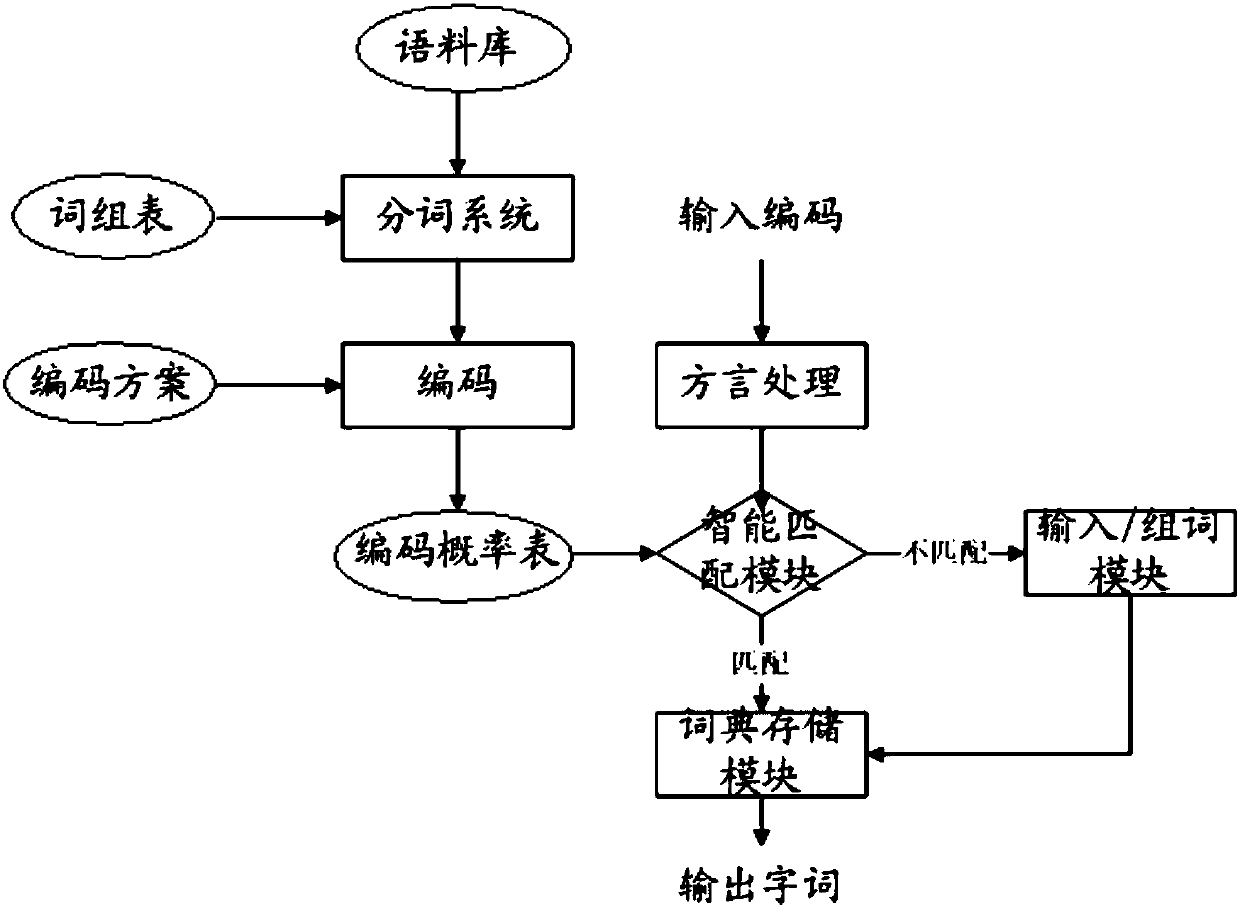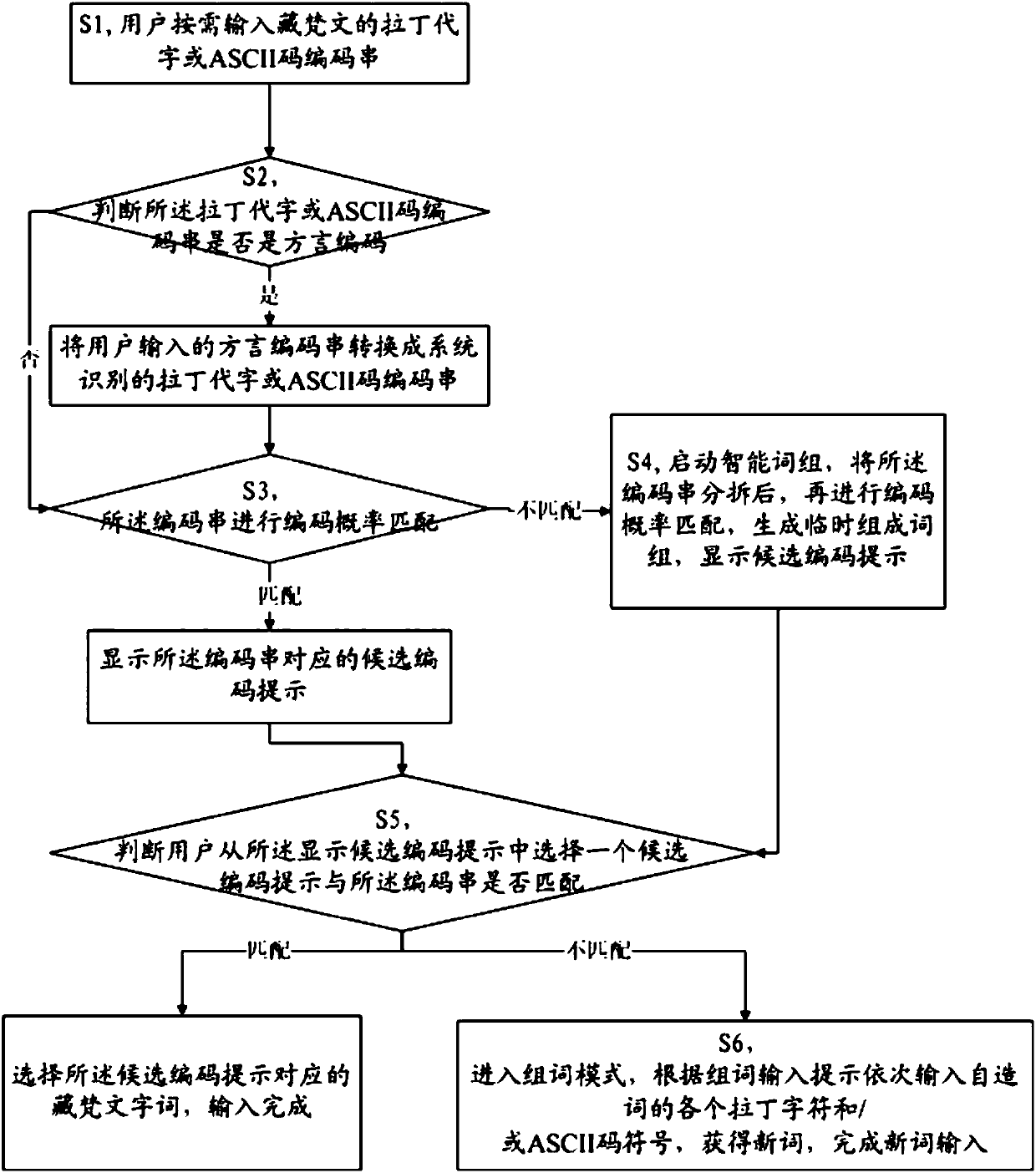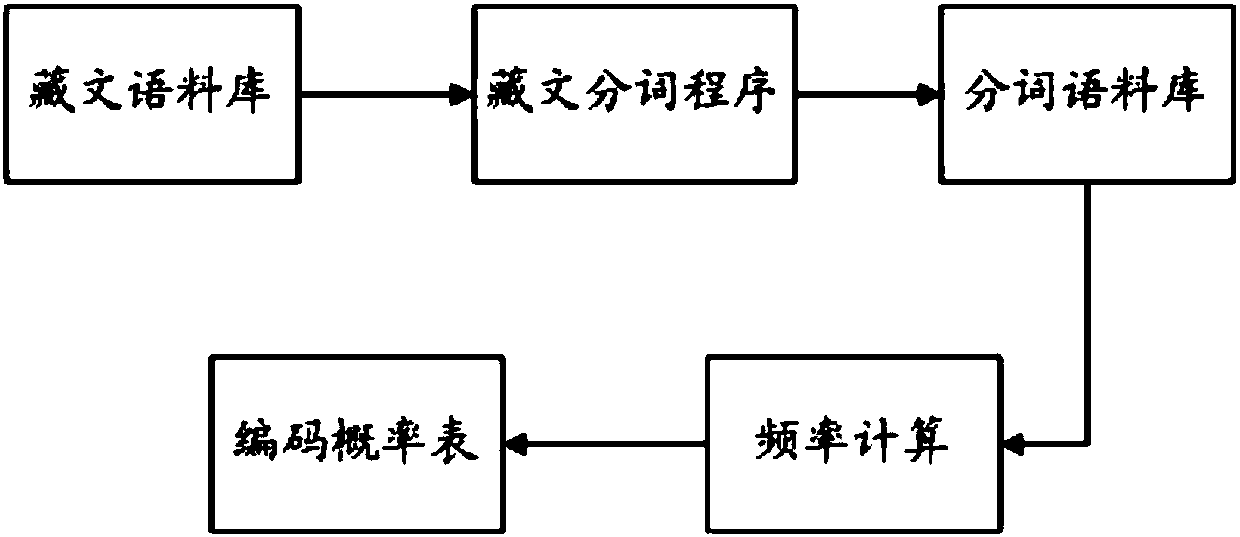A Tibetan-Latin full-simplified double-pin coding method and its intelligent input system
An encoding method, a Latin technology, applied in the input/output process of data processing, instruments, electrical digital data processing, etc. Write two-way accurate conversion, fixed vocabulary associative prompts and calls, etc.
- Summary
- Abstract
- Description
- Claims
- Application Information
AI Technical Summary
Problems solved by technology
Method used
Image
Examples
Embodiment 1
[0090] The full-simplified double spelling coding method of Tibetan Latin of the present embodiment comprises: Tibetan-Sanskrit Latin code table and basic coding rules;
[0091] Tibetan-Sanskrit letters in the Tibetan-Sanskrit Latin code table W and a in the Latin alphabet are used to encode the pronouns, and the other 28 Tibetan-Sanskrit letters are consistent with the Latin letters in the internationally accepted Wylie encoding rules. In the international general wylie encoding rules, the consonant needs to write the vowel a thereafter to represent, but the present invention does not need to write it out. See Table 1 Tibetan-Sanskrit Latin code table for details.
[0092] Table 1 Tibetan-Sanskrit Latin suffix coding table
[0093]
[0094] In this embodiment, the basic encoding rules include:
[0095] Rule 1: For Tibetan and Sanskrit parts with pronunciation, Latin letters with the same or similar pronunciation are used as codes for reading and writing codes, and corre...
Embodiment 2
[0132] refer to figure 1 , the intelligent input system of the full-simplified double-pin coding of Tibetan Latin in the present embodiment is based on the intelligent input system of the full-simplified double-pin coding method of Tibetan Latin described in embodiment 1, and the input system includes: an intelligent matching module, a dictionary storage module, input / word module and dialect processing module; the intelligent matching module matches the coded string input by the user with the code stored in the coded probability table, and obtains a matching result; if it is a "no match" result, the coded After the string is split, each split part is matched again, a phrase is temporarily formed, a candidate prompt is generated, and the candidate prompt is sent to the input / word module; Said coding string is transcribed into Tibetan Sanskrit; Described input / group word module, according to group word input prompt, imports each Latin character of self-made word successively to...
Embodiment 3
[0148] refer to figure 2 , the intelligent input method of the Tibetan Latin full-simplified double-pin coding of the present embodiment, based on the intelligent input system of the Tibetan-language Latin full-simplified double-pin coding method described in embodiment 2, use the computer standard keyboard QWERTY keyboard, full simple double-pin Intelligent input of Tibetan and Sanskrit includes the following steps:
[0149] S1, the user inputs Tibetan-Sanskrit Latin characters or ASCII code strings as required;
[0150] S2, judging whether the Latin code or ASCII code string is a dialect code, if so, converting the dialect code string input by the user into a Latin code or ASCII code string recognized by the system, and entering S3; if not, directly entering S3;
[0151] S3, performing encoding probability matching on the encoding string, if matching, displaying the candidate encoding prompt corresponding to the encoding string, and turning to S5; if not matching, then tu...
PUM
 Login to View More
Login to View More Abstract
Description
Claims
Application Information
 Login to View More
Login to View More - R&D
- Intellectual Property
- Life Sciences
- Materials
- Tech Scout
- Unparalleled Data Quality
- Higher Quality Content
- 60% Fewer Hallucinations
Browse by: Latest US Patents, China's latest patents, Technical Efficacy Thesaurus, Application Domain, Technology Topic, Popular Technical Reports.
© 2025 PatSnap. All rights reserved.Legal|Privacy policy|Modern Slavery Act Transparency Statement|Sitemap|About US| Contact US: help@patsnap.com



